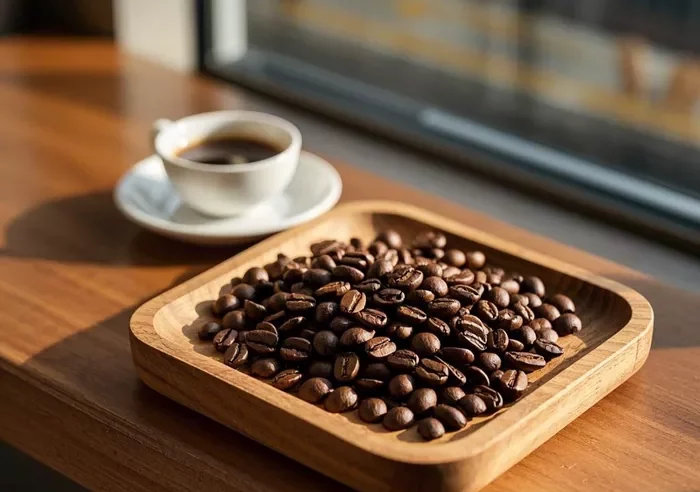Coffee lovers often ask: which coffee bean is the best? The answer isn’t simple. The “best” coffee depends on your taste preferences, brewing method, and what qualities you value in your cup. As a coffee research specialist, I’ll guide you through the world of coffee beans to help you find your perfect match.
Coffee beans come from the Coffea plant, with two main species dominating the market: Arabica and Robusta. These account for about 99% of global coffee production. Within these categories, numerous varieties and growing regions create incredible diversity in flavor profiles.
Arabica vs. Robusta: The Great Debate
Arabica Coffee Beans
Arabica (Coffea arabica) is the most popular coffee type, representing about 60-70% of global production. These beans grow best at high altitudes (600-2,200 meters) in tropical climates near the equator.
Key characteristics of Arabica:
- Smoother, sweeter taste
- Higher acidity (brightness)
- Complex flavor notes (fruity, floral, chocolatey)
- Lower caffeine content (about 1.2-1.5%)
- More delicate plants, harder to grow
Arabica beans generally command higher prices due to their superior flavor and more difficult cultivation requirements. The best specialty coffees typically come from Arabica plants.
Robusta Coffee Beans
Robusta (Coffea canephora) makes up most of the remaining global coffee production. These hardy plants thrive at lower elevations (200-900 meters) and resist diseases better than Arabica.
Key characteristics of Robusta:
- Stronger, harsher taste
- Higher caffeine content (about 2.2-2.7%)
- Earthy, nutty flavor profile
- More bitter with less acidity
- Crema-rich (good for espresso)
- Easier and cheaper to grow
While often considered inferior, high-quality Robusta has its place in coffee blends, especially for espresso where its crema production and caffeine kick are valued.
Top Coffee Bean Varieties
Within Arabica and Robusta, several varieties stand out for their exceptional quality:
Typica
One of the oldest and most genetically pure Arabica varieties. Grown throughout Latin America, Asia, and Africa. Known for clean, sweet cups with balanced acidity.
Bourbon
A natural mutation of Typica, famous for its complex, wine-like acidity and sweetness. Grows well in Brazil, Rwanda, and El Salvador.
Geisha (or Gesha)
The champagne of coffee beans. Originally from Ethiopia, now famously grown in Panama. Delicate floral and tea-like characteristics with jasmine aromas.
SL28 & SL34
Kenyan varieties developed in the 1930s. Produce intensely bright, fruity coffees with blackcurrant notes.
Pacamara
A hybrid of Pacas and Maragogype varieties. Large beans with bold flavors ranging from chocolate to tropical fruit.
Best Coffee Beans by Growing Region
Coffee’s flavor changes dramatically based on where it’s grown. Here are the world’s top coffee regions and their signature profiles:
Latin America
- Colombia: Balanced, medium body, caramel sweetness, nutty
- Brazil: Chocolatey, nutty, low acidity, often used in espresso blends
- Guatemala: Bright acidity, full body, chocolate and spice notes
- Costa Rica: Clean, bright, with honey and citrus flavors
Africa
- Ethiopia: Birthplace of coffee. Floral, tea-like, or intensely fruity (blueberry notes common)
- Kenya: Bright acidity, winey, blackcurrant flavors
- Rwanda: Sweet, fruity, sometimes floral with berry notes
Asia/Pacific
- Sumatra (Indonesia): Earthy, herbal, full-bodied, low acidity
- Java (Indonesia): Spicy, woody, sometimes with tobacco notes
- Papua New Guinea: Balanced, sweet, with tropical fruit notes
Processing Methods Affect Flavor
How coffee cherries are processed after harvesting significantly impacts flavor:
Washed (Wet) Process
- Cherries are pulped, then fermented to remove mucilage
- Produces clean, bright coffees with pronounced acidity
- Common in Colombia, Kenya, and Central America
Natural (Dry) Process
- Cherries dry whole in the sun before removing pulp
- Creates fruity, sweet, sometimes fermented flavors
- Traditional in Ethiopia, Brazil, and Yemen
Honey Process
- A middle ground where some mucilage remains during drying
- Results in balanced sweetness and body
- Popular in Costa Rica and El Salvador
Roast Levels and Their Impact
Roasting transforms green coffee beans into the aromatic brown beans we know. Roast level dramatically changes flavor:
Light Roast
- Light brown color, no oil on surface
- Preserves origin characteristics and acidity
- Highlights floral, fruity, tea-like notes
- Common for specialty single-origin coffees
Medium Roast
- Balanced flavor, acidity, and body
- Some caramelization of sugars occurs
- Versatile for most brewing methods
- Popular in North America
Dark Roast
- Shiny black beans with oil on surface
- Bittersweet flavors dominate over origin characteristics
- Lower acidity, heavier body
- Used for espresso and French press
Freshness Matters More Than You Think
Coffee tastes best when fresh. After roasting, beans:
- Peak at 4-14 days post-roast
- Remain good for about 1 month
- Lose flavor quickly after grinding
For the best cup:
- Buy whole beans and grind just before brewing
- Look for roast dates on packaging
- Store in an airtight container away from light and heat
- Avoid freezing or refrigerating (causes condensation)
How to Choose Your Best Coffee Bean
Consider these factors when selecting beans:
Your Taste Preferences
- Like bright, fruity flavors? Try African light roasts
- Prefer chocolatey, nutty cups? Go for Latin American mediums
- Enjoy bold, intense coffee? Consider dark roasts or blends
Your Brewing Method
- Espresso: Blends with some Robusta or Brazilian beans
- Pour-over: Single-origin African or Central American
- French press: Sumatran or other full-bodied coffees
Ethical Considerations
Look for certifications like:
- Fair Trade (better prices for farmers)
- Organic (grown without synthetic chemicals)
- Rainforest Alliance (environmental standards)
Conclusion
After exploring coffee varieties, regions, and processing methods, one truth emerges: the best coffee bean depends entirely on your personal taste and how you plan to brew it.
For specialty coffee lovers, high-altitude Arabica beans from renowned growing regions often deliver the most exciting flavors. Geisha varieties from Panama or natural-processed Ethiopians offer unparalleled complexity. Meanwhile, espresso enthusiasts might prefer a carefully crafted blend with some high-quality Robusta.
Related topics:
How to Make Cold Brew White Coffee


